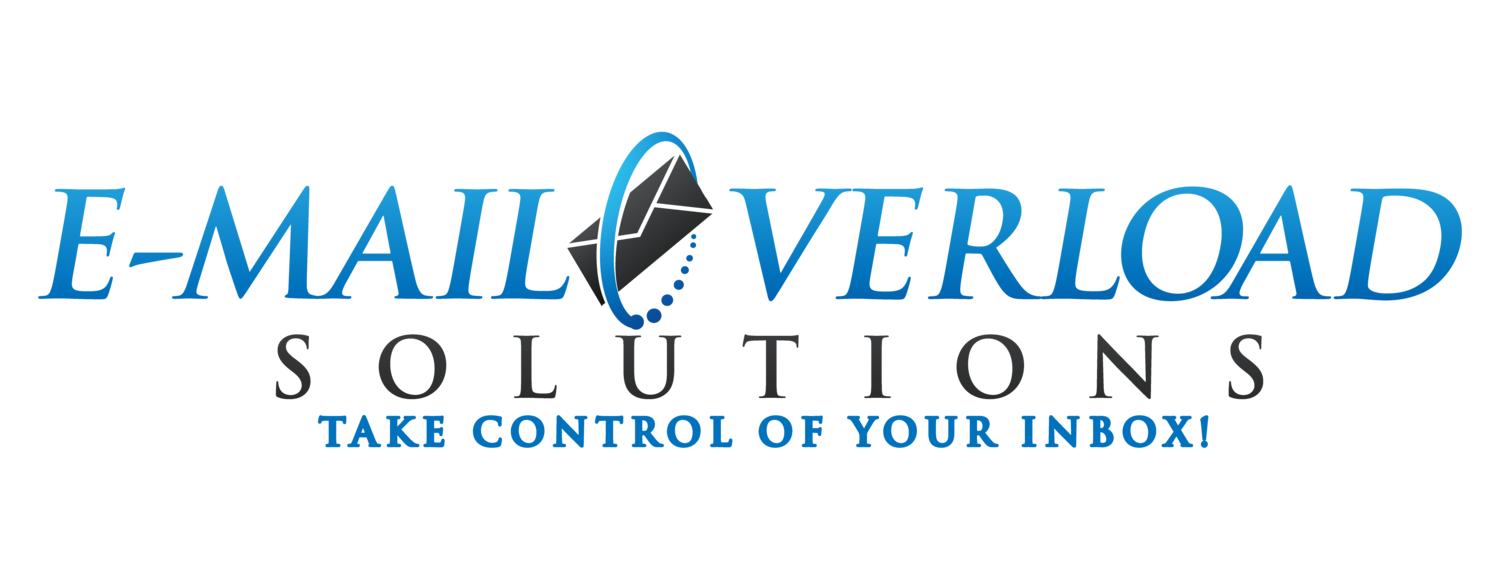Email List Building Techniques that Work
/Whether you own a large or small company, online Email campaigns through an Email List are one of the best ways for attracting people to your website and building your brand.
Building your Email list is a very cost-effective way for both attracting new customers to your site, as well as for engaging and retaining existing customers. In this article, we will review the benefits of creating an Email List, a few Email List Providers, Collecting Emails, Segmenting your Email List, and some tips on Creating your Emails campaigns.
Benefits of an Email List
Before starting to create your Email list, you should first understand some of the benefits an Email List can provide to your business or organization.
Promote New Products
An Email list is one of the easiest ways to inform your customers about new products, services, and offers. Before you launch a new product or service, you can use an Email campaign to get your customers excited and can even offer them early access or special discounts.
Communicate with your Customers
An Email list is a great way for communicating with your customers about any aspect of your business. This can be through a periodic newsletter, special offers, summaries of services, helpful articles, links to your blog posts, or even links to other related resources or events.
Initiate Feedback
People that receive your Emails will be able to directly respond to you with both questions about your services as well as potential problems and issues. This gives you an opportunity to provide helpful responses to their questions and fast resolution of their issues. Ensure that the Email account you use to send out your communications is consistently monitored and that you respond to any questions quickly. This shows that you listen and care about your customers and helps build a strong relationship with your prospects and customers.
Convert Prospects to Customers
Many people who come across your brand may not make a purchase right away. However, by adding them to your Email List, you can send them communications and newsletters with new products and great offers. This way, you c an turn them from an “interested prospect” into a “paying customer”.
Now that you understand some of the key benefits to an Email List, we now focus on some of the important steps and tools you will need to create an Email list and make it effective. But don’t worry if you do not have a lot of experience in creating an Email List. With many of the tools available today, creating an Email list doesn’t have to be overly difficult or complicated. Start simple, and you can always add more features and functions as you go along. The key is to create an Email List that makes it easy to collect your business contacts and keep them organized.
Select an Email List Provider
There are literally hundreds of Email List management tools that are available, but here are a few good options which are either “free”, or have a “free tier” for up to a certain number of subscribers and often with limited features, but definitely with enough room and power to certainly get you started:
TinyLetter - One of the easiest (and fully free) tools you can use for managing a simple Email list. It will help you design custom sign-up forms and send-out newsletters. This is a free tool, although it has a 5,000 subscriber limit (but this may be plenty for many small businesses and organizations).
MailChimp – This is by the same people that make TinyLetter, but is a much more powerful Email management tool. It is free for up to 2,000 subscribers, and then has many different “paid tiers”. This is a very powerful Email tool which can support businesses and organizations of all sizes and types. (NOTE: This is what is used for the mailing list by this site, Email Overload Solutions).
SendinBlue – This is another Email tool that can really get you started with creating an Email list. This is another tool which is essentially free and will help you build a detailed Email list and keep it organized, no matter how many contacts you end up having. Although there are “paid tiers” with more features, the free service has everything you need to get started.
Email Octopus - This is another Email tool that runs on the Amazon SES infrastructure. It is simple but effective Email management system and you can have up to 2,500 subscribers for free.
Collect Customer and Prospect Emails
After you select and set-up an Email Service provider, the next important step is to collect Emails from current customers and potential prospects. Here are a few tips on how to collect your Email contacts.
Don’t Purchase Lists
Some people may be tempted to “jump start” their Email List buy “buying” Email subscribers from companies that offer to sell you existing Email lists. However, this is usually not a helpful approach since the subscribers may not be good “matches” for your site. And in many cases and locations, it may not even be legal to purchase Email lists, as you must allow people to “opt into” an Email list.
In fact, purchasing Emails may be a way to quickly get a bad reputation or even getting “banned” by your Email List provider. Or it may just result in your Emails ending-up in someone’s “spam folder” instead of their “Inbox”. Don’t take this short-cut since what you want to do is to attract people who are really interested in your content and the services you offer.
Collect Emails on your Website
The first and easiest step is to add an Email List “Opt In” option to your website. This can be a form embedded in multiple places on your website, as well as a “pop-up” that appears under certain circumstances that invites them to sign-up to your Email List. Just be careful that any pop-ups aren’t “too aggressive”, since many people don’t like them, even though they are very effective. It is always important to ask for someone’s permission to add them to your Email List, and to always give them the ability to “Opt Out” later on if they wish.
Collect Emails using Social Media
Use social media (Facebook, Twitter, etc.) as ways to provide a channel for collecting Emails from prospects or customers. You can provide a link in your social media posts and accounts that allows them to submit their Email to your Email List provider. Or you can add links to one of your site’s “landing pages” that contains an Email collection form.
Collect Emails at Physical Locations
If you have a “brick and mortar” business, then don’t forget to try to collect Emails from customers or visitors to your stores. You can collect them as part of the sales check-out process or even provide “Mailing List” and “Special Offer” cards that customers complete when visiting your store and enter them manually yourself.
Segment your Email List
Email list segmentation is a great technique that many Email marketers use to better target their audience. They divide their list into smaller groups or “segments” so that they are easier to manage and able to customize messages and offers.
Define your Segments
In general, you can have large or small segments, and as many as you wish.
Here are some typical Mailing List segments:
Recent Purchasers - You can target people who recently purchased something. This way, you can target offers to them to make additional purchases.
Mailing List Subscribers – You can also target someone that recently subscribed to your “newsletter”. The goal is to provide them with valuable information and offers. You want to turn them from a “prospect” to a “customer”.
Demographic Data – You may collect information such as geographic location, gender, age, or other data points. For example, you may wish to tailor an offer to people only in a specific region, or perhaps you have a product or service that is age or gender specific.
Create your Segments
Most mailing list systems such as Mailchimp include built-in “segmentation” features. However, there are some “paid services” that contain very powerful segmentation features, including; ConstantContact, ConvertKit, AWeber and HubSpot. They have tools that not only help you segment your list, but also to create targeted Emails for your subscribers based on these segments. However, note that some of these are only “paid services”.
Personalize based on Segments
You should always try and personalize your Emails as much as possible. You can use your Email List segments to send out even more personalized Emails in order to catch their attention. The idea here is to add value and target to your offers by using the Email list segments.
Don’t Overdo your Segments
Be careful to not overdo it. You may drive people away from signing-up from your list if they are worried about all the data you are collecting. And there are also laws governing the type and use of any data that you collect, so make sure you understand all applicable laws.
Create Attractive Emails and Newsletters
You should always keep in mind that the best way for an Email List to be successful is through targeting the right people, at the right time, with the right content.
Deliver High-Quality Content
The most effective thing you should do is to create high-quality content that will be interesting and helpful to members of your contact list. The more effort you put into making sure that your audience enjoys your Email content, the more they will respond with positive actions, such as making purchases or engaging in conversations.
Continually Refine your Content
Always work to adjust and perfect your content for your target audience. One way to achieve this is through an “Email Poll”, where you can ask your subscribers questions about any specific content they would like to see more about. Once you have this feedback, you can deliver more of what your users are looking for in your Emails.
Create Well-Designed Communications
Pay close attention to how you present and design your Emails. The Email management tools mentioned earlier contain built-in templates, backgrounds and even complicated designs that allow you to highly customize your Emails to your liking and brand. Just make sure to not “go overboard” and make your Emails too busy or complicated. Often, simple is better when it comes to Emails!
Be Mobile Friendly
Make sure your Emails are mobile friendly. This is very important as more and more people use “mobile devices” for reading their Emails. You want your subscribers to be able to easily view your emails and newsletters from any device they own. This will make sure that they never miss an Email and are always informed about new promotions and offers. Although most Email management tools create “mobile friendly” Emails automatically, it is something you be aware of and carefully monitor and test.
Which of these techniques did you find helpful?
Are you planning to incorporate any of these suggestions into your Email list?












